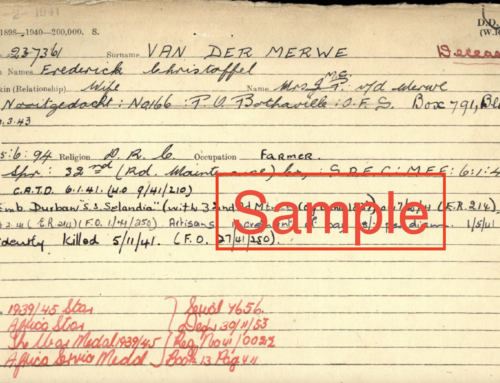It was quite a while after I met my husband that I found out he was adopted. It was a dark secret back in those days, something to be hidden from all but the closest of the family – it was as if you would go straight to hell if you even mentioned the word.
I suppose that finding out Donald was adopted and the fact that I came from a very large family (five sisters and one brother) was what first got me interested in genealogy and family history, not to forget the arrival of our first computer with internet connectivity.
This is Donald’s story.

St. Monica’s Home for unmarried mothers
He always knew that he had been adopted and it made him feel very special and allowed him to build a very close relationship with his adoptive mother. He believed she was very special, as she and his adoptive father had wanted him when it seemed that somebody else had not.
As he got older he began to wonder about his birth mother, largely because he feared that there may be a history of dread diseases lurking in his birth family.
Donald decided not to begin his search until his adoptive mother passed away because he did not want to compromise his relationship with her. But he did visit his place of birth, a derelict home called St. Monica’s for unmarried mothers in Kendal, in the Lake District in the UK, without her knowing. She had told him he had been born in Kendal and finding himself in the area on a family holiday, Don made enquiries and visited the building.
When his adoptive mother died, Donald decided it was time to investigate his adoption, especially as she had left him a few clues: names, addresses and dates in a notebook. This was too much of a challenge for me and I turned to my computer as Donald turned to the British Adoption Agency (BAA) for more information. Before long, I had a name, Mary, and an address, and was soon chatting to newly made acquaintances in the UK via email.
Before the BAA would release any papers to Donald, they insisted he go for counselling with an accredited counsellor to prepare him for any nasties or difficult truths that may come out as the story unfolded. He has formed a great bond with this counsellor who has remained a close friend ever since.
My investigations were progressing well and while we waited to hear from the BAA I tracked down somebody who, if she was not Donald’s mother, was possibly his grandmother or aunt. This woman didn’t know that we were on her trail. All the information I had found came from trawling through hundreds of records and with lots of help from fellow genealogy enthusiasts in the UK.
With no word from the British Adoption Agency, we were getting to the stage where we wanted to get things moving. The longer things dragged on, the more Donald wondered if we were actually doing the right thing, or in fact, if it was what he really wanted to do. He went back to his counsellor, who decided that as we could wait for years for a response and as my research was pointing so strongly in what seemed to be the right direction, she would write to the person whom I thought could be Donald’s mother.
The letter was sent, briefly stating that the counsellor had a client named Donald, who was trying to find his birth mother in the UK. After a couple of weeks, she received a reply, which was not the reply we wanted to hear: “I know nothing about this person. Stop chasing me on that computer thingy. My past is my past.”
So, a warning to you all: be so careful when you start looking. Even a 79-year-old lady, in a country village in England, knew somebody was looking for her! Rushing in without help and guidance can kill a search even before it has properly begun.
In deciding what to do next, Donald went back to his counsellor, who suggested that he go home and write a letter to his mother, just to get everything out of his system. He spent most of the night doing so, covering over 40 years of his life and trying to explain how he had felt about being adopted. His counsellor read the letter and decided that it was very moving and that we should send it to the woman we suspected of being his mother to see if it elicited any form of response.
We calculated that it would take a week for the letter to be delivered, a week for her to think about responding, and a week for a reply to find its way back. So, we did not expect to hear from her for at least three weeks. We waited for weeks and weeks with hope fading all the time, until about two months later a letter arrived. There was no way I was going to open it without Donald, so I phoned him at work and told him to get his butt home quickly! I left him alone in the bar with a single malt whisky and the letter from England. He appeared a few minutes later with a smile on his face, a tear in his eye, and announced that Joan was, in fact, his mother. In the letter she apologized for her first, very dismissive reply, saying that she had been shocked, having put out of her mind the events that had happened over 40 years ago.
After a flurry of letters back and forth and quite a few phone calls, we hopped on a flight to the UK so that Donald could meet his mother and find out more about the circumstances of his birth. At this stage, we had still not received his file from the adoption agency.
This is just the first chapter in a story that has another 14 years of twists and turns, including many highs and lows between Donald and his mother, the finding and burying of a father and, recently, a link up with a half-brother. Read part two here.
If anybody knows or is related to Joan Roebuck please contact me she died in 2015




